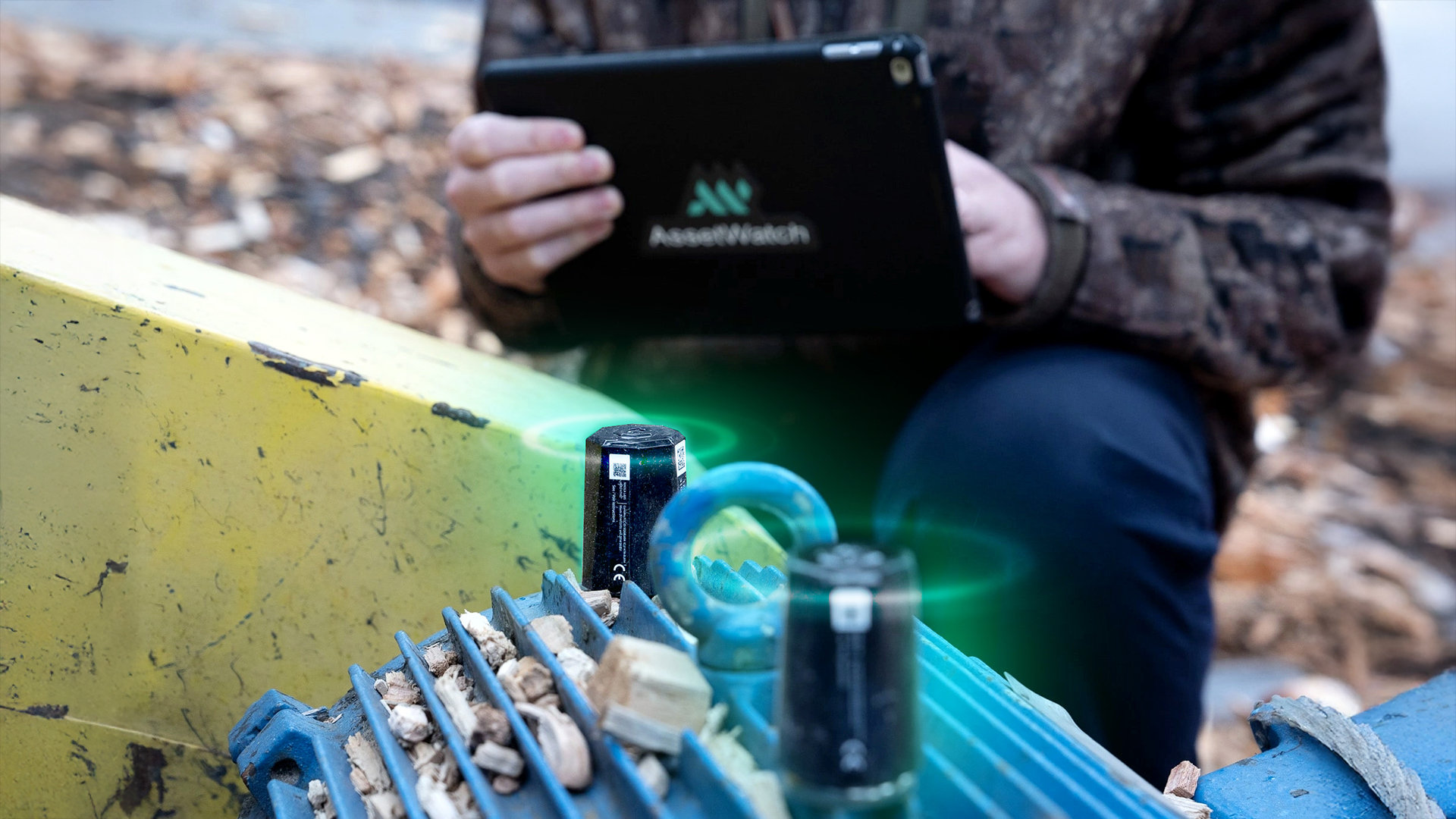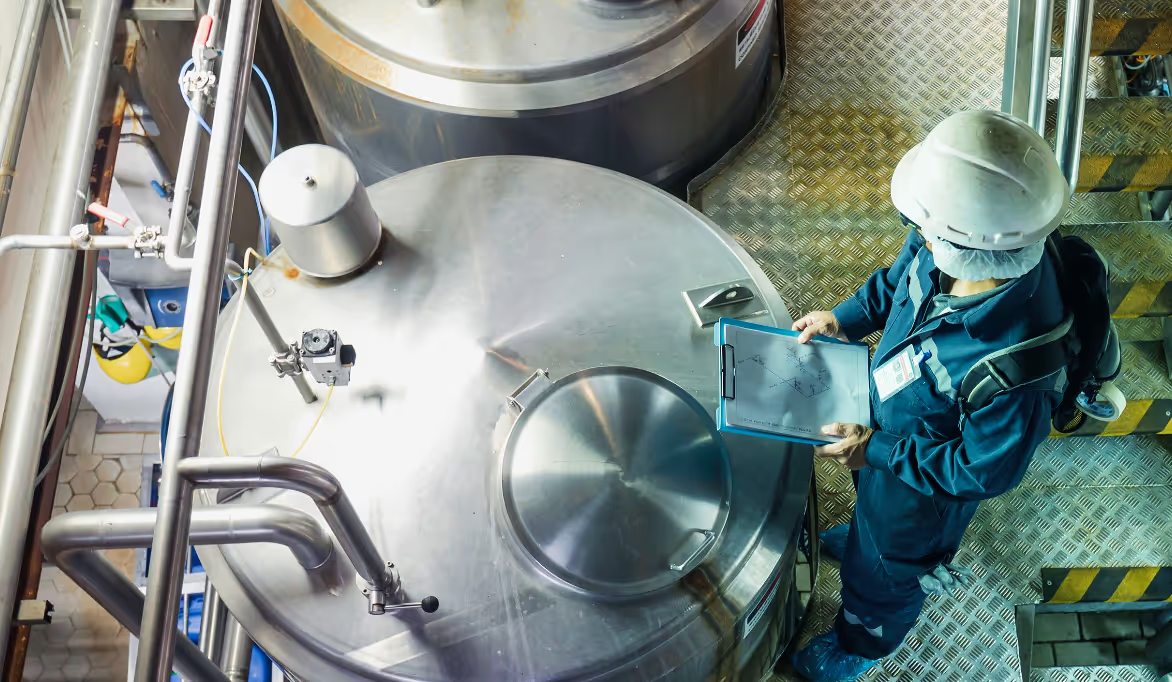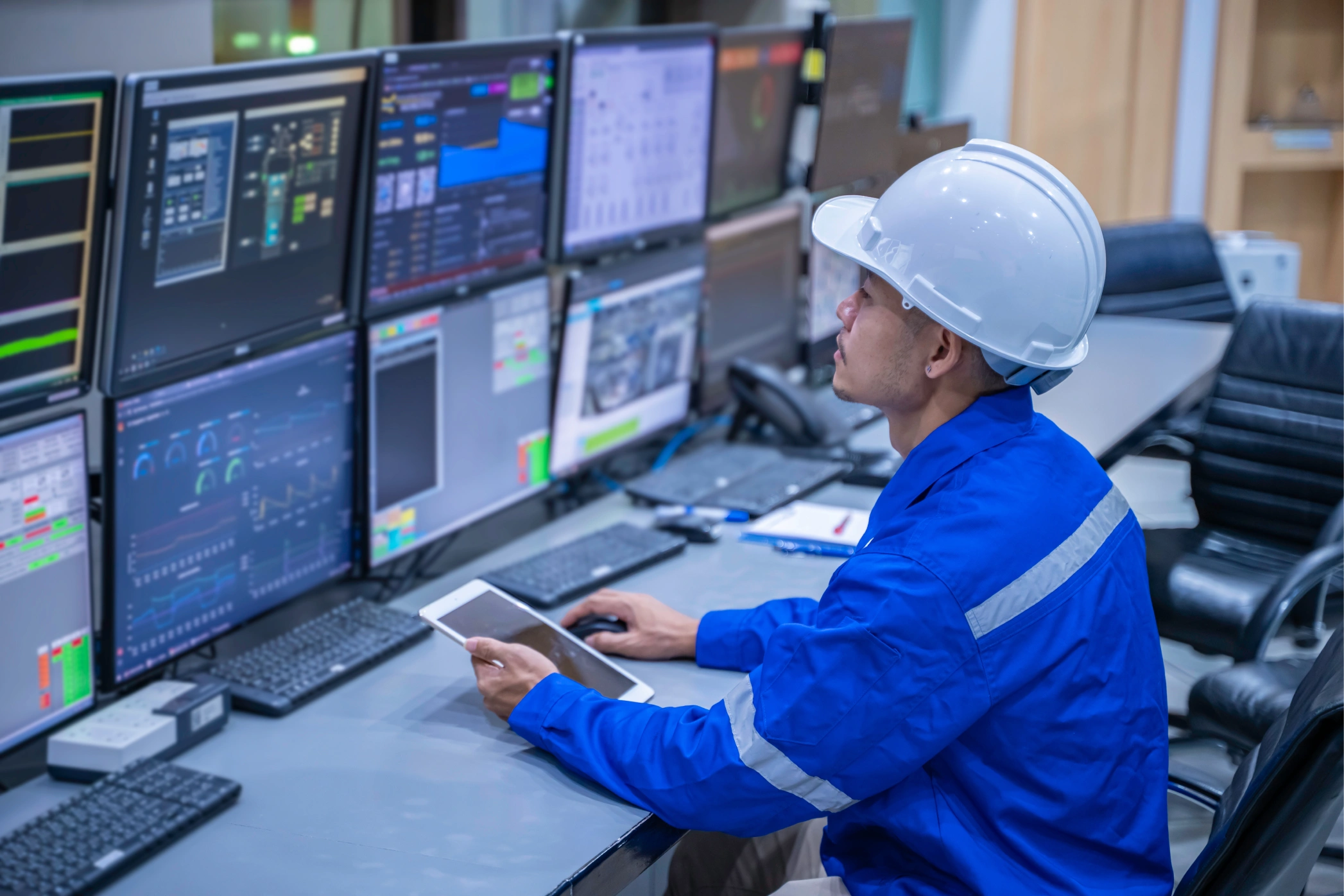On any given day, your grinders are humming, conveyors are moving, and everything seems to be running fine—until suddenly, it isn’t. A bearing seizes, production stops, and the ripple effect begins.
Unexpected downtime not only eats into output, but also drives up maintenance costs, triggers complaints when odors and contaminants are unleashed, and puts extra stress on your crew as they scramble to contain the problem. In some cases, sudden equipment failures can create safety hazards that no facility leader wants to face.
With vibration sensors, you can put an end to reactive chaos. By listening to what your machines are telling you, you can address issues early in the failure curve, prevent costly incidents, and take back control of your rendering operations.
In this post, we'll explain how industrial vibration sensors work and how you can use vibration data to build a more predictable, profitable, resilient operation.
In rendering, the risks of unexpected downtime reach further than lost production. They threaten your reputation, compliance, and worker morale. The only way out is to be able to foresee failures early and prevent them easily.
Understanding Vibration Sensor Technology
At the core of this technology are accelerometers, small but powerful devices used to measure vibration. These sensors, built for harsh production environments, attach directly to industrial equipment and convert mechanical vibration levels into an output signal—a stream of vibration data that shows frequency, velocity, and intensity.
Here’s what makes these sensors indispensable in rendering.
Complete coverage from every angle
Modern industrial vibration sensors use triaxial accelerometers that measure motion across three axes—side to side, up and down, and front to back. This 3D view of mechanical vibrations helps reveal imbalance, looseness, or bearing wear that single-axis sensors might miss.
For rendering facilities packed with rotating machinery, that extra insight can be the difference between catching an issue early and facing unplanned downtime. Wireless triaxial sensors also make installation simpler, requiring fewer devices while capturing a wider frequency range and more accurate measurements.
Unlike older systems that struggle to detect faults at low speeds, triaxial sensors capture high-resolution vibration data at slower rotational speeds. That means you can still identify subtle bearing wear, imbalance, or shaft misalignment in equipment that turns just a few hundred RPM—critical for renderers whose most important assets don’t always run fast but run constantly.
From motion to meaning
Here’s how real-time data is captured, flows, and helps the maintenance team determine next steps:
- The sensor detects vibration from your equipment and converts it into an electrical output signal.
- Vibration data streams into a cloud-based system powered by advanced AI-driven vibration analysis tools.
- AI flags abnormal vibrations or changes in intensity that signal potential equipment failures.
- A dedicated CAT III+ condition monitoring engineer (CME) validates the data, ensuring only valid alerts get through, and reaches out with actionable insights your maintenance teams can use to prevent downtime.
Day to day, you get continuous, real-time data on equipment health without disrupting operations. This predictive maintenance system enabled by real-time condition monitoring provides the assurance that no stone is left unturned, and no potential issue goes unnoticed.
Real-time visibility made easy
What Can Vibration Analysis Reveal?
Rendering plants depend heavily on motors, pumps, fans, conveyors, centrifuges, grinders, and other rotating equipment. These machines operate under harsh conditions: heavy loads, high temperatures, and constant motion. That's why it's important to monitor vibration—the "voice" of your machinery.
When you measure mechanical vibrations at regular intervals, you can build a baseline of normal performance. Problems arise when vibrations deviate from expected ranges.
Abnormal vibrations often signal equipment failure risks such as:
- Bearing wear
- Shaft misalignment
- Imbalance in rotating machinery
- Looseness in machine components
- Electrical issues in motors
Left undetected, these issues can snowball into production stoppages, resulting in costly downtime, safety and environmental hazards, and heightened business risk.
Here's a great example of vibration analysis in action. At a food and beverage facility, vibration readings on a compressor spiked with high-frequency harmonics. The facility's dedicated CME partner identified likely thrust bearing wear and quickly reached out to the maintenance team, advising them on next steps. The worn bearing was replaced before failure, restoring normal vibration levels and preventing a costly shutdown—saving $150,000 in the process. 💡Read the full story here.
Real-World Impact: Turning Data Into Action
If there's no one on hand to interpret vibration data or determine which alarms need immediate attention, condition monitoring systems can burden lean maintenance teams to the point of diminishing returns. What's needed is a dedicated human expert, with eyes on the data, who can provide timely, actionable recommendations.
A turnkey solution that combines sensor technology with advanced analytics and expert oversight enables lean teams to do more with less. Rather than drowning in data and alerts, your crews can address potential problems with clear next steps for preventing failure.
Predictive maintenance done right looks like this day to day:
- Always-on monitoring with wireless triaxial sensors covering a wide range of frequencies and machine types
- Asset anomaly and fault detection powered by AI and machine learning
- Ongoing support from a dedicated CME who can analyze vibration data, provide prescriptive guidance, and support root cause analysis
- Clear prioritization of what matters most
- Confidence in decision-making backed by expert-validated data
- Scalable systems that adapt as facilities grow or expand
A well-run predictive maintenance program not only drives value fast through early asset saves, but also drives cultural change. With each potential equipment failure prevented, your team builds confidence and makes progress on foundational KPIs. ⬇️ Download our predictive maintenance KPI checklist for a simple guide you can use to measure your success.
How Real-Time Vibration Data Transforms Rendering Plants
Relying on reactive or scheduled maintenance means your team is either scrambling to put out fires or replacing parts at fixed intervals regardless of need. Both approaches drive up production costs and leave you vulnerable to machine failures.
With a machine vibration monitoring system, you can move to a proactive approach that's condition based. Your team can finally conquer unplanned downtime and streamline maintenance with a simple combination of strategically placed vibration sensors, AI, and ongoing expert support.
Here’s why that's critical for rendering operations.
- Protect uptime: Avoid unplanned outages that jeopardize compliance, production schedules, and business reputation.
- Cut production costs: Catching problems early reduces the need for major repairs or replacements.
- Boost safety: Preventing catastrophic failures lowers risks for employees.
- Strengthen quality control: Stable, reliable equipment helps maintain consistent output.
- Make informed decisions: Leaders can prioritize maintenance budgets and schedule tasks based on real data, not guesswork, to increase efficiency.
Vibration analysis is a frontline defense against costly downtime, but the impact of a condition-based maintenance program extends far beyond preventing failures. You'll have the power to improve efficiency, enhance reliability, and change the trajectory of your business.
Don't Let Downtime Render You Helpless
Rendering operations face constant pressure to run efficiently, safely, and profitably. But without the right visibility into your machinery, unexpected failures can and will occur. With vibration monitoring, you gain early detection of abnormal vibrations, accurate insights into equipment health, and the means to take control of production.
👉 Want practical tips to get started? Download our free guide, From Production Chaos to Predictive Success. You'll learn how to avoid common pitfalls, smooth adoption, and reduce downtime and risk starting on day one.
📅 If you're planning to attend the NARA Convention, October 21–24, we’d love to meet face-to-face. Stop by the AssetWatch booth or schedule a call with us in advance. Let's talk about how a turnkey condition monitoring solution can benefit your operations.








.png)
.png)
.png)

.png)






